
Buffalo National River: A Natural Oasis in the Ozarks
Discover the untouched beauty of Buffalo National River in Arkansas, where crystal-clear waters, scenic trails, and serene campsites await in the heart of the Ozarks.
Buffalo National River in Arkansas is a hidden gem offering a pristine environment for nature enthusiasts. As one of the few remaining undammed rivers in the lower 48 states, it provides a unique opportunity to experience the raw beauty of the Ozark Mountains. Flowing freely for 135 miles, the river meanders through rugged terrain, lush forests, and towering bluffs, creating a remarkable and diverse landscape. Visitors can enjoy a variety of activities, from canoeing and kayaking to hiking and fishing. The river's crystal-clear waters are perfect for paddling adventures, whether you're a novice or an experienced kayaker. For those who prefer to stay on land, numerous trails offer breathtaking views and encounters with local wildlife. The Lost Valley Trail and Hemmed-In Hollow Falls are particularly popular, showcasing stunning waterfalls and scenic vistas. Camping along the Buffalo National River is an experience not to be missed. With several campgrounds and backcountry sites available, you can immerse yourself in the tranquility of nature. Night skies here are incredibly clear, making it an ideal spot for stargazing. Whether you're seeking adventure or relaxation, Buffalo National River provides a serene escape into nature's bounty.
Local tips in Buffalo National River
- Visit during spring or fall for the best weather and fewer crowds.
- Bring water shoes for easy navigation in and around the river.
- Check water levels before planning any paddling activities.
- Reserve campsites in advance, especially during peak seasons.
- Don't forget insect repellent, as bugs can be plentiful.
- Carry a map and compass, as cell service is limited in the area.
Buffalo National River: A Natural Oasis in the Ozarks
Buffalo National River in Arkansas is a hidden gem offering a pristine environment for nature enthusiasts. As one of the few remaining undammed rivers in the lower 48 states, it provides a unique opportunity to experience the raw beauty of the Ozark Mountains. Flowing freely for 135 miles, the river meanders through rugged terrain, lush forests, and towering bluffs, creating a remarkable and diverse landscape. Visitors can enjoy a variety of activities, from canoeing and kayaking to hiking and fishing. The river's crystal-clear waters are perfect for paddling adventures, whether you're a novice or an experienced kayaker. For those who prefer to stay on land, numerous trails offer breathtaking views and encounters with local wildlife. The Lost Valley Trail and Hemmed-In Hollow Falls are particularly popular, showcasing stunning waterfalls and scenic vistas. Camping along the Buffalo National River is an experience not to be missed. With several campgrounds and backcountry sites available, you can immerse yourself in the tranquility of nature. Night skies here are incredibly clear, making it an ideal spot for stargazing. Whether you're seeking adventure or relaxation, Buffalo National River provides a serene escape into nature's bounty.
When is the best time to go to Buffalo National River?
Iconic landmarks you can’t miss
Boxley Valley Historic District
Explore the historical treasures and breathtaking landscapes of Boxley Valley Historic District, a captivating destination in the heart of Arkansas.

Buffalo National River Headquarters
Experience the natural beauty and adventure of Buffalo National River Headquarters, a gateway to outdoor exploration in Arkansas.

Buffalo National River Wilderness - Ponca Unit
Explore the breathtaking Buffalo National River Wilderness - Ponca Unit, a haven for nature lovers and adventure seekers in Arkansas.

Buffalo National Wild & Scenic River
Discover the untouched beauty and outdoor adventures of Buffalo National Wild & Scenic River, a natural gem in Arkansas perfect for nature enthusiasts and thrill-seekers.
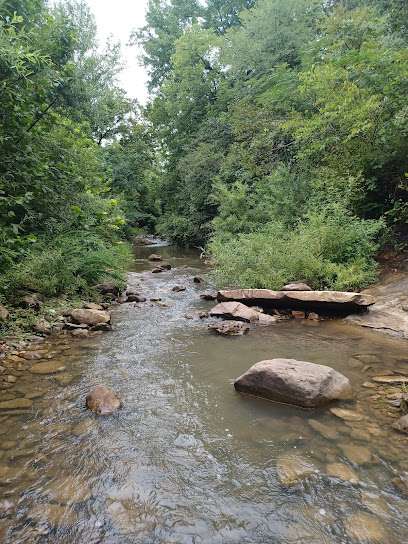
Unmissable attractions to see
Pedestal Rocks & Kings Bluff Trailhead
Discover the stunning landscapes and unique rock formations at Pedestal Rocks & Kings Bluff Trailhead in Arkansas, perfect for hiking and nature exploration.

Big Bluff Goat Trail
Discover the awe-inspiring views and exhilarating trails of Big Bluff Goat Trail, a premier hiking destination in Arkansas, perfect for all outdoor enthusiasts.
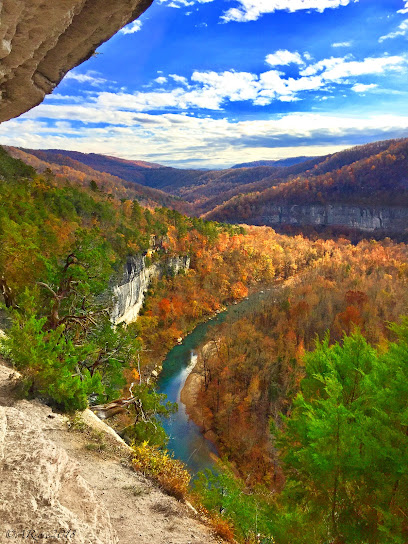
Tyler Bend Visitor Center
Explore the beauty of the Ozarks at Tyler Bend Visitor Center, your gateway to unforgettable outdoor adventures and rich cultural history.

Hemmed-In Hollow Falls
Explore Hemmed-In Hollow Falls, Arkansas' tallest waterfall, surrounded by the stunning beauty of the Ozark Mountains and perfect for hiking enthusiasts.
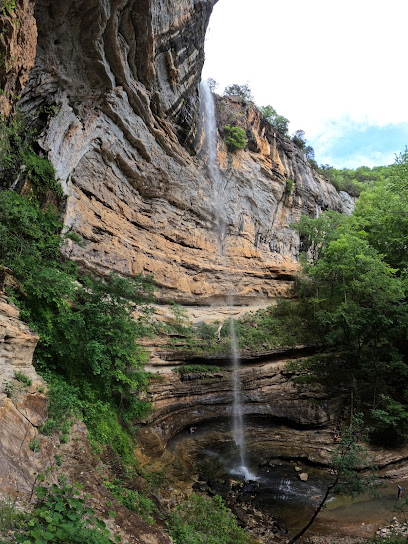
Grinder's Ferry
Explore Grinder's Ferry, a serene swimming basin in St. Joe, Arkansas, perfect for swimming, picnicking, and enjoying nature's tranquility.

Indian Rockhouse Trail
Explore the natural wonders of Indian Rockhouse Trail, a hiker's paradise nestled in the Ozark Mountains, brimming with caves, waterfalls, and lush forests.

Saint Joe Historic Depot Museum
Explore the captivating history of Saint Joe, Arkansas at the Historic Depot Museum, a treasure trove of local heritage and culture.
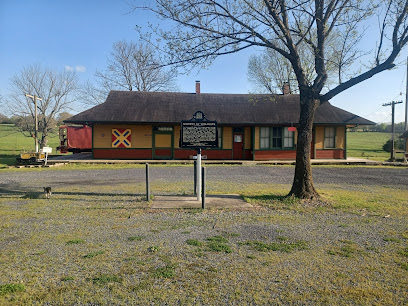
Buffalo National River Wilderness - Ponca Unit
Explore the breathtaking landscapes and outdoor adventures at Buffalo National River Wilderness - Ponca Unit, a nature lover's paradise in Arkansas.

Buffalo River Historic Jail & Museum
Discover the captivating history of Marshall, Arkansas at the Buffalo River Historic Jail & Museum, where the past comes alive through engaging exhibits.

Upper Buffalo Wilderness
Explore the breathtaking landscapes and diverse wildlife of Upper Buffalo Wilderness, a true natural gem in the heart of Arkansas's Ozark Mountains.

Collier Homestead
Explore the historical significance and natural beauty of Collier Homestead, a hidden gem along the Buffalo River Trail in St. Joe, Arkansas.

Richland Falls
Explore Richland Falls in the Ozarks: a breathtaking natural attraction with stunning waterfalls and scenic hiking on Richland Creek Trail.

Buffalo River Scenic Lookout
Discover the stunning landscapes and tranquil beauty at Buffalo River Scenic Lookout, a perfect escape in the heart of Arkansas.

Confluence of the White & Buffalo Rivers
Discover the stunning natural beauty at the Confluence of the White & Buffalo Rivers in Arkansas, a perfect haven for outdoor enthusiasts and nature lovers.

Buffalo National Wild & Scenic River
Discover the Buffalo National Wild & Scenic River—a pristine Arkansas getaway for adventure, wildlife, and breathtaking landscapes.

Essential places to dine
Markets, malls and hidden boutiques
Fergusons Country Store & Restaurant, solid Cherry & Oak Furniture
Experience the charm of Americana at Fergusons Country Store & Restaurant, where hearty breakfasts meet handcrafted furniture in St. Joe, Arkansas.

Buffalo River Outfitters
Explore the beauty of the Buffalo National River with Buffalo River Outfitters - your gateway to canoeing, kayaking, and cabin rentals in Arkansas.

Lost Valley Canoe & Lodging
Discover the beauty of Arkansas at Lost Valley Canoe & Lodging, where adventure and nature come together for an unforgettable experience.

Scenic Point Gift Shop
Explore Scenic Point Gift Shop in Arkansas for unique souvenirs, local crafts, and a friendly shopping experience in a picturesque setting.

Big Springs Trading Company
Experience authentic Southern barbecue and deli delights at Big Springs Trading Company in St. Joe, Arkansas, where flavor meets a warm atmosphere.

Wild Bill's Outfitter
Discover the Adventure of Canoeing and Kayaking at Wild Bill's Outfitter in the Heart of the Ozarks.
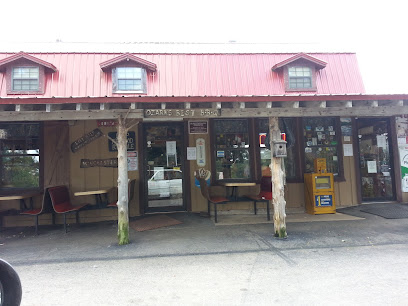
Dry Creek Homestead Merchantile
Explore the unique flavors and treasures of Dry Creek Homestead Merchantile, where delicious deli food meets charming antiques in Pindall, Arkansas.

Gilbert General Store
Explore the heart of the Ozarks at Gilbert General Store, your one-stop shop for camping gear and local groceries in beautiful Arkansas.

Buffalo Camping & Canoeing
Experience the great outdoors at Buffalo Camping & Canoeing, your gateway to adventure in the heart of Arkansas, with camping, canoeing, and local flavors.

Bubba's Buffalo River Store
Discover unique souvenirs and local crafts at Bubba's Buffalo River Store, the perfect stop for tourists in Jasper, Arkansas.

The Flippin Hippie
Explore The Flippin Hippie, a vibrant gift shop in Flippin, Arkansas, where unique treasures and local artistry await every visitor.

Kaylee's Lil Shop
Explore Kaylee's Lil Shop for unique finds and vintage treasures in Harriet, Arkansas—where every visit is a treasure hunt.

Shelby's
Discover unique gifts and local treasures at Shelby's, your go-to destination for baby clothing, jewelry, home goods, and coffee in Harrison, Arkansas.

Buffalo Canoe Manufacturing
Discover Buffalo Canoe Manufacturing in Jasper, AR - your gateway to exceptional canoes, expert advice, and unforgettable outdoor adventures.

The little hill shop
Explore The Little Hill Shop in Leslie, Arkansas, for unique handmade gifts and local treasures that capture the essence of Southern charm.
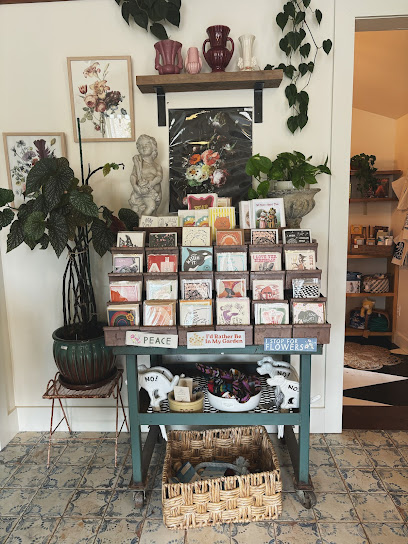
Essential bars & hidden hideouts
Daisy Queen
Experience classic American fast food at Daisy Queen in Marshall, Arkansas, where delicious flavors and a nostalgic atmosphere await.

Buffalo Outdoor Center
Experience the best of Arkansas at Buffalo Outdoor Center, where adventure meets nature in the stunning Ozark Mountains.

Cliff House Inn
Experience the breathtaking beauty and culinary delights of Cliff House Inn, a unique restaurant and inn in the heart of the Ozarks.

Four Quarter Bar
Discover the vibrant flavors and cozy atmosphere at Four Quarter Bar in North Little Rock, where grilling meets great company.

178 Club Restaurant
Experience the ultimate dining adventure at 178 Club Restaurant in Bull Shoals, where American cuisine meets fun and entertainment.

Fergusons Country Store & Restaurant, solid Cherry & Oak Furniture
Discover the charm of Fergusons Country Store & Restaurant: where delicious American breakfasts meet exquisite handcrafted furniture in St. Joe, Arkansas.

Los Locos Mexican Restaurant Marshall Ar
Experience the rich flavors of authentic Mexican cuisine at Los Locos, a must-visit restaurant in Marshall, Arkansas.

Buffalo River Outfitters
Discover adventure at Buffalo River Outfitters – your premier destination for canoeing, kayaking, and cozy cabin rentals in Arkansas.

Gaston's White River Resort
Discover the serenity of Gaston's White River Resort, where gourmet dining meets breathtaking nature and exciting outdoor adventures await.

Sonic Drive-In
Discover the nostalgic charm and delicious fast-food offerings at Sonic Drive-In in Marshall, Arkansas, a perfect pit stop for travelers.

Boston Mountain Pizza
Discover Boston Mountain Pizza: A delightful culinary experience in Marshall, Arkansas, serving delicious pizzas and a welcoming atmosphere.

Big Springs Trading Company
Experience the heart of Southern cuisine at Big Springs Trading Company in St. Joe, Arkansas, where barbecue and deli delights await every visitor.
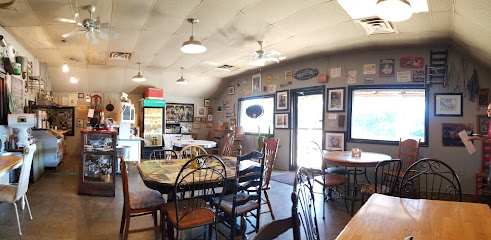
Craw Billy's Seafood Boil & BBQ
Experience the best of Cajun cuisine at Craw Billy's Seafood Boil & BBQ in St. Joe, AR, where fresh seafood meets southern hospitality.

Buffalo Bar
Experience the heart of the Ozarks at Buffalo Bar, where rustic charm meets delicious cuisine and refreshing drinks.

Buffalo Point Cabins & Restaurant
Discover Buffalo Point Cabins & Restaurant: A serene retreat for nature lovers and food enthusiasts in the heart of the Ozarks.

Local Phrases about Buffalo National River
-
- HelloHowdy
[haw-dee] - GoodbyeSee ya
[see yuh] - YesYep
[yep] - NoNah
[nah] - Please/You're welcomePlease/You're welcome
[please/yur welcome] - Thank youThanks
[thanks] - Excuse me/SorryExcuse me/Sorry
[excuse me/sorry] - How are you?How y'all doin'?
[how y'all doin'] - Fine. And you?Fine. And you?
[fine. and y'all?] - Do you speak English?Ya speak English?
[ya speak english?] - I don't understandI don't get it
[I don't get it]
- HelloHowdy
-
- I'd like to see the menu, pleaseCan I see the menu, please
[can I see the menu, please] - I don't eat meatI don't eat meat
[I don't eat meat] - Cheers!Cheers!
[cheers!] - I would like to pay, pleaseI need to pay now, please
[I need to pay now, please]
- I'd like to see the menu, pleaseCan I see the menu, please
-
- Help!Help!
[help!] - Go away!Git!
[git!] - Call the Police!Call the Sheriff!
[call the sheriff!] - Call a doctor!Call a doc!
[call a doc!] - I'm lostI'm lost
[I'm lost] - I'm illI'm sick
[I'm sick]
- Help!Help!
-
- I'd like to buy...I wanna buy...
[I wanna buy...] - I'm just lookingI'm just lookin'
[I'm just lookin'] - How much is it?How much does it cost?
[how much does it cost?] - That's too expensiveThat's too pricey
[that's too pricey] - Can you lower the price?Can ya lower the price?
[can ya lower the price?]
- I'd like to buy...I wanna buy...
-
- What time is it?What time is it?
[what time is it?] - It's one o'clockIt's one o'clock
[it's one o'clock] - Half past (10)Half past (10)
[half past (10)] - MorningMornin'
[mornin'] - AfternoonAfternoon
[afternoon] - EveningEvenin'
[evenin'] - YesterdayYesterday
[yesterday] - TodayToday
[today] - TomorrowTomorrow
[tomorrow] - 1One
[one] - 2Two
[two] - 3Three
[three] - 4Four
[four] - 5Five
[five] - 6Six
[six] - 7Seven
[seven] - 8Eight
[eight] - 9Nine
[nine] - 10Ten
[ten]
- What time is it?What time is it?
-
- Where's a/the...?Where's a/the...?
[where's a/the...?] - What's the address?What's the address?
[what's the address?] - Can you show me (on the map)?Can you show me (on the map)?
[can you show me (on the map)?] - When's the next (bus)?When's the next (bus)?
[when's the next (bus)?] - A ticket (to ....)A ticket (to ....)
[a ticket (to ....)]
- Where's a/the...?Where's a/the...?
History of Buffalo National River
-
The Buffalo National River area was home to Native American tribes long before European settlers arrived. Artifacts such as arrowheads, pottery, and rock art found in the area indicate that various indigenous cultures, including the Bluff Dwellers, occupied the region for thousands of years. These early inhabitants utilized the river and its surrounding resources for hunting, fishing, and farming.
-
By the 18th century, the Osage Nation dominated the area encompassing the Buffalo National River. The Osage were known for their skilled hunting techniques and strategic use of the river valleys for seasonal camps. The Buffalo River provided a rich hunting ground and served as a crucial trade route for the Osage people.
-
In the early 19th century, European settlers began exploring and establishing homesteads along the Buffalo River. The Louisiana Purchase of 1803, which included Arkansas, facilitated increased exploration and settlement by pioneers. These settlers were primarily subsistence farmers, and the river provided essential resources such as water, fish, and fertile land.
-
The Buffalo River region, like much of Arkansas, was affected by the Civil War. Although no major battles occurred directly along the river, the area was marked by skirmishes and guerrilla warfare. Both Union and Confederate forces traversed the terrain, and local residents often found themselves caught between the warring sides.
-
Following the Civil War, the Buffalo River area saw an influx of settlers looking to rebuild their lives. The timber industry began to flourish as loggers harvested the abundant hardwood forests. Small communities and towns, such as Jasper and Ponca, grew along the river, fostering a burgeoning local economy.
-
By the mid-20th century, there was growing awareness of the need to preserve the natural beauty and ecological integrity of the Buffalo River. Spearheaded by Dr. Neil Compton and the Ozark Society, a movement to protect the river from proposed dam projects gained momentum. Their efforts culminated in the establishment of the Buffalo National River in 1972, the first national river in the United States.
-
The cultural heritage of the Buffalo National River region is a rich tapestry woven from various influences. The area is dotted with historic homesteads, barns, and cemeteries that tell the stories of early settlers. Traditional Ozark crafts, music, and folklore continue to be celebrated, preserving the unique cultural identity of this picturesque region.
Buffalo National River Essentials
-
Buffalo National River is located in northern Arkansas, United States. The nearest major airport is Northwest Arkansas Regional Airport (XNA) in Bentonville, approximately 80 miles away. From the airport, you can rent a car and drive to the park, which takes around 2 hours. Alternatively, you can fly into Little Rock National Airport (LIT) and drive approximately 3 hours to reach the Buffalo National River. There are no direct public transportation options to the park, so having a car is essential.
-
The most convenient way to explore Buffalo National River is by car. There are several access points to the river, including Ponca, Steel Creek, Tyler Bend, and Buffalo Point. Once inside the park, you can use the well-maintained roads to visit different sections. Canoeing, kayaking, and hiking are popular ways to explore the river itself. While there are no public transportation options within the park, local outfitters offer shuttle services for paddlers and hikers.
-
The official currency is the US Dollar (USD). Credit and debit cards are widely accepted at most businesses, including gas stations, restaurants, and lodges near the park. However, it's advisable to carry some cash, especially when visiting more remote areas where card payment facilities might not be available. ATMs are available in nearby towns such as Harrison and Jasper.
-
Buffalo National River is generally a safe destination for tourists. However, it is important to follow standard safety precautions. Stay on marked trails, wear appropriate footwear, and always carry water. Be cautious around the river, especially during high water levels. There are no specific high-crime areas targeting tourists, but it is always wise to keep your belongings secure and avoid leaving valuables in your car. Wildlife encounters are common, so be mindful of your surroundings.
-
In case of an emergency, dial 911 for immediate assistance. Cell phone coverage can be limited in the park, so it is advisable to carry a map and inform someone of your plans before heading out. Park rangers are available at visitor centers and can provide assistance. The nearest medical facilities are in Harrison, approximately 30 miles from the park. It is recommended to have travel insurance that covers medical emergencies.
-
Fashion: Do wear comfortable and weather-appropriate clothing. Lightweight, moisture-wicking fabrics are ideal for hiking. Avoid wearing open-toe shoes. Religion: Do respect local customs and traditions. While the area is not predominantly religious, being respectful at historical and cultural sites is appreciated. Public Transport: There is no public transport within the park. Plan your trip with a car rental or shuttle service. Greetings: Do greet people with a friendly 'hello' or 'hi'. The locals are generally welcoming and friendly. Eating & Drinking: Do try local cuisine at nearby eateries. Don't litter; always pack out what you pack in to preserve the natural beauty of the park.
-
To experience Buffalo National River like a local, visit during the off-peak seasons of spring and fall for fewer crowds and milder weather. Engage with local outfitters and guides who can offer insider knowledge about the best hiking trails, fishing spots, and paddling routes. Don't miss a visit to the small towns of Jasper and Ponca for a taste of local culture and hospitality. Participate in ranger-led programs for a deeper understanding of the area's natural and cultural history.
Nearby Cities to Buffalo National River
-
Things To Do in Branson
-
Things To Do in Eureka Springs
-
Things To Do in Conway
-
Things To Do in Rogers
-
Things To Do in Bentonville
-
Things To Do in Sherwood
-
Things To Do in North Little Rock
-
Things To Do in Little Rock
-
Things To Do in Fort Smith
-
Things To Do in Hot Springs
-
Things To Do in Joplin
-
Things To Do in Jonesboro
-
Things To Do in Pine Bluff
-
Things To Do in Poplar Bluff
-
Things To Do in Lake of the Ozarks












